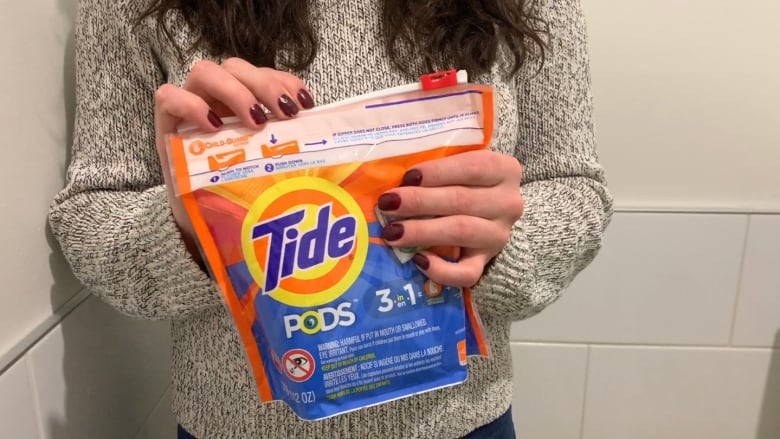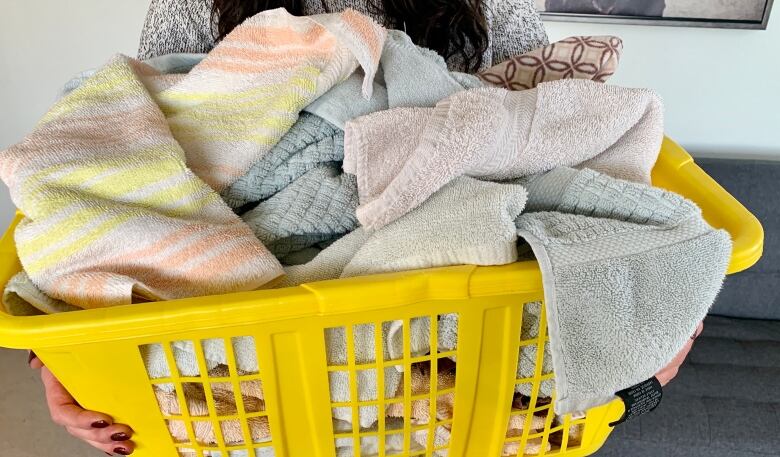Laundromat etiquette: A laundry list of best practices during COVID-19
Use detergent, hot water and extra care when touching knobs and folding areas

Eventually, everyone runs out of clean underwear.
And socks. And towels.
Doing laundry safely might seem daunting in the throes of the COVID-19 pandemic, especially for people who rely on shared laundry facilities in apartment buildings orlaundromats.
But staying on top of dirty piles of laundry is helpful in preventing transmission of any virus, said David Evans, a virologist and professor of medical microbiology and immunology at the University of Alberta.
"Nice hot water with a good, standard laundry detergent will kill any virus you might have come in contact with," Evans said.
Evans has spent his career studying virusesand said they are often quite sensitive to detergents: soaps get rid of the fatty layer that surrounds the virus, allowing it to be broken up.

And while detergent alone might kill the virus, Evans said it's also a good idea to turn the dial from cold cycle up to warm or hot if possible.
"You can think of what you do to an egg when you heat it to 60 C it'll start to coddle. Well, a virus will start to coddle at 60 as well, so 60 C to 70 C water and a standard detergent will kill these things pretty well," he said.
When using shared laundry spaces, Alberta Health Services recommends washing hands and wiping down machine controls with a disinfectant both before and after using. AHS also echoes Evans' suggestion to use the warmest possible water setting.

The provincial health authority makes several other recommendations including:
- Fully drying items at highest temperature possible.
- Disinfecting hampers before re-filling with clean laundry.
- Taking clean laundry home to fold.
- Closing dryer doors when not in use.
- Don't shake or hug dirty laundry.
- Don't leave soiled laundry or baskets on top of machines.
- Don't leave cleaning product residue in machines.
- Limit the number of people in the laundry room to ensure physical distancing.
In an email, an AHS spokesperson said managers or owners of multi-unit residential buildings are urged to create a schedule of use for the laundry areasor to stagger access times to prevent crowding. As well, a list of laundry rules should be posted at the entryways along with directions to look up aseries of recommendations about shared laundry created by the National Collaborating Centre for Environmental Health.
If doing laundry for a person who is sick, guidelines from the U.S Centers for Disease Control and Protection recommendwearing disposable gloves while handling soiled items. The wearer should dispose of the gloves and wash their hands right away after finishing.
The American agency adds that it is safe to wash dirty items from a sick person along with the rest of the laundry.













_(720p).jpg)


 OFFICIAL HD MUSIC VIDEO.jpg)
.jpg)



























































































